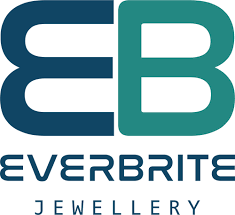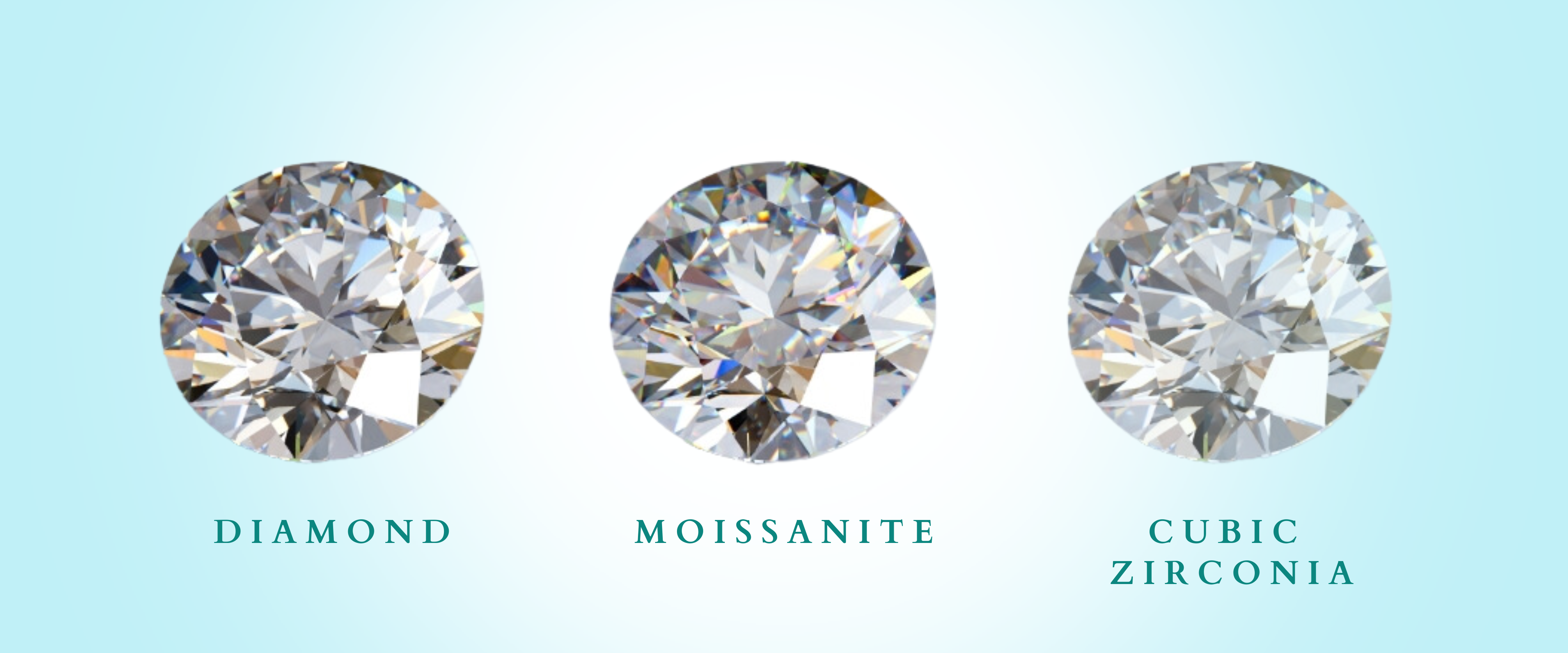Our ancestors wore jewellery made of shells, stone and bones, according to studies of prehistoric times (and The Flinstones, obviously). An article in the Victoria and Albert Museum website explains, “It is likely that it was worn as a protection from the dangers of life or as a mark of status or rank.” While bigger jewels still signify rank today, our material and style options are endless. From semi-precious to precious gemstones, metals, glass, pearls, to even clay and paper jewels, we have a world of variety to choose from. If you’ve always been a collector of diamond jewellery and been hearing about ‘affordable, ethical’ alternatives, you may have started to wonder about choosing between diamonds, moissanite and cubic zirconia.
Moissanite and cubic zirconia have been shining in the jewellery market as sparkly alternatives to diamonds — with affordability, availability and sustainability as the buzzwords, and reasons behind their starry ascent.
We’re going to break down the story behind these ‘stones’ to help you decide what you should be choosing between diamonds, moissanite and cubic zirconia. Or if you really need to.
DIAMONDS
A diamond is the solid form of the element carbon, and both mined and lab-grown diamonds have the exact physical and chemical composition. Lab diamonds are 100% carbon and as durable as mined diamonds, except they are manufactured in a lab, under controlled conditions making them a more affordable version of luxury, while mined diamonds come directly from Mother Nature’s Lap.
What they look like: One among the only four precious stones in the world, diamonds sit pretty between rubies, sapphires and emeralds. Raw diamonds, once treated (including cutting and polishing), are faceted, and depending on the cut, sparkle a little differently.
A diamond’s sparkle depends on its ability to take in and then, reflect light. Mostly, diamond cuts with more facets are more brilliant than those that have fewer facets — like round and fancy diamonds (Princess, Radiant and Cushion, Oval, Pear, Heart and Marquise). The elegant Asscher cut and Emerald cuts are less brilliant, but shine with a mirror-like effect. This classification holds true for both mined and lab-grown diamonds.
What they’re made of: 100% carbon
Shapes (and colours) they’re available in: Diamonds are available in range of shapes, from round to radiant, to heart. Mined diamonds can be found in colours like pink, green, purple, yellow, blue, black and more. While naturally occurring, these are rare and command a high premium. Lab-grown diamonds are also manufactured in a range of colours, and are more easily accessible (and easier on the wallet).
Durability: Diamonds are a perfect 10 on the Mohs Scale of Hardness (rough measure of the resistance of a smooth surface to scratching or abrasion, expressed in terms of a scale created by mineralogist Friedrich Mohs, with 10 being the hardest and 1 being the softest). Not a surprise, considering they’re named after the Greek word adámas meaning “unbreakable”. Check out this video, where we here at Everbrite Jewellery put a lab diamond to the test!
View this post on Instagram
Quality check (QC) and cost: Diamonds are graded using the 4C’s system: carat weight, colour, clarity and cut. Diamonds are more expensive than moissanite and cubic zirconia by a long shot, but lab-grown diamonds have narrowed the gap in the price difference.
USP: For traditionalists choosing between diamonds, moissanite and Cubic zirconia, diamonds are forever (the winner) —they denote luxury, and are known for their classic looks, durability, and purity — all of which give them a clear edge.
MOISSANITE
Surprise, surprise, if you thought moissanite was invented as a diamond substitute, hold on. Not all moissanite is man-made. In fact, moissanite is a naturally occurring mineral, first discovered over 120 years ago in a meteorite crater in Arizona by French chemist, Dr. Henri Moissan. It was named after him.
In the late ‘90s, lab-created moissanites emerged as an alternative to both diamonds, and natural moissanites.
Fun fact: Natural moissanites are in fact, rarer than mined diamonds.
What they look like: Moissanites refract light to a higher degree than diamonds, reflecting twice the amount of fire, which means they give off rainbow light flashes. i.e. the moissanite sparkles differently than a diamond.
This resulting disco-ball effect, seen more clearly in moissanites of larger carat weights, is a good way to distinguish between moissanite and diamond. They also can develop inclusions (birthmarks or flaws) when being created in the lab.
So baby, (if) you’re (ready for) a firework, this one’s for you.
What they’re made of: Silicon carbide
Shapes (and colours) they’re available in: Moissanites can more or less be cut in the same shapes as diamonds but will reflect light differently. While most moissanites can now be created as colourless or near colourless, they are also created in hues of teal, grey, green, yellow, and black. Moissanite tends to typically have faint yellow or green tinge, which gets more pronounced as the stone size increases.
Coloured moissanite is coloured using a process called high pressure, high temperature (HPHT) treatment and can be available in a range similar to coloured diamonds.
Durability: A 9.25 on the Mohs Scale of Hardness, Moissanites are softer than diamonds
QC and cost: They evolved as a ‘diamond stimulant’ as they’re more affordable than mined diamonds, and have been a popular alternative for engagement rings — but lab-grown diamonds are giving these a run for their money. They are graded on the 4C scale of diamonds and the price is determined based on size/carat.
USP: While their affordability made moissanite more popular than mined diamonds, the rise of lab-grown diamonds has pushed that aside — because lab diamonds combine the superior quality of diamonds with the lower environmental effect of moissanite.
On the plus side, a moissanite will look like a firework and its durability will ensure it stays sparkly forever. Moissanite contains some silicon, so it will likely attract less grease and dirt.
CUBIC ZIRCONIA (CZ)
An age-old alternative to diamonds, called a ‘diamond stimulant’ the CZ, more commonly known as ‘American Diamond’ is manufactured in a lab with the intent to replicate the dazzle of diamonds and has been in use since the 1970s. It is described as a ‘a synthesised gemstone made of zirconium dioxide’.
The key difference between lab-grown diamonds and CZ, is that the former is the same composition as a mined diamond, meaning it is a diamond, while the CZ is created just to look like a diamond. The CZ is often used by the fashion industry to bedazzle outfits and accessories.
What they look like: Cubic zirconia has a far lower refractive index than a diamond. It captures light differently and is less sparkly. However, being lab-created, it is intrinsically flawless and has no inclusions. Mined and lab-grown diamonds tend to have inclusions and they emanate a brilliant white light while cubic zirconia will reflect a rainbow of coloured light, like moissanite.
What they’re made of: Crystalline form of zirconium dioxide
Shapes (and colours) they’re available in: Like diamonds and unlike moissanite, high cubic zirconia is colourless. This enables manufacturers to add colour with colouring agents.
QC and cost: Cubic Zirconia stones are rated from A to AAAAA. A is the lowest, AAAAA is the highest grade. The rating system for cubic zirconia is based on the same 4C’s since they’re faceted like diamonds. They’re also priced much lower than diamonds and moissanite.
Durability: Between an 8 and 8.5 on the Mohs Scale of Hardness — more brittle, prone to chipping, scratches and losing their sparkle over time.
USP: If you’re choosing between diamonds, moissanite and cubic zirconia, the one reason to opt for the CZ is it’s affordable. Moissanite and lab-grown diamonds are more expensive than synthetic CZs, which makes price the only bigger draw.
Let us know in the comments, which one you’d pick, and why!


Diamonds, forever 🙂
Keep shining Everbrite!